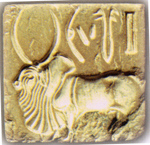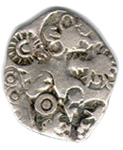Money is an intrinsic component of the cultural heritage of a country mirroring its socio-economic history. India was one of the earliest issuers of coinage in the world (circa 6th Century BC) and has been home to many-a-monetary experiment recorded in history. The study of coinage in history is called numismatics.
Few countries rival India for the sheer diversity of its coinage be it minting techniques, motifs, sizes, shapes, the metals used or for that matter the monetary history arising from the Monetary Standards India has experienced (Tri-metallism, Bi-metallism, the Silver Standard, the Gold Exchange Standard as well as fiat money). The Motifs on coins have been impacted upon by the cultural ethos of different regions at different time periods.
Punch Marked Coins
- The Indus Valley civilization, centered around Mohenjo-Daro and Harappa, flourished from approximately 2500 BC to 1750 BC. However, there’s debate over whether the seals found at these sites were actually used as coins.
- The documented history of coinage begins with the emergence of ‘Punch Marked’ coins during the 7th-6th century BC, lasting until the 1st century AD. These coins were named for the technique used in their production, where symbols were individually punched onto the coin’s surface.
- Predominantly crafted from silver, these coins were initially issued by merchant guilds and later by states. They served as a trade currency during a period marked by extensive trade activities and urban growth.
- The motifs adorning these coins primarily featured natural elements such as the sun, various animals, trees, hills, as well as geometric symbols.
- These coins are broadly categorized into two periods: the first period, associated with the Janapadas or small local states, and the second period, linked to the Imperial Mauryan period.
Dynastic Coins
- These coins are generally dated between the 2nd century BC and the 2nd century AD.
- The silver coins of the Indo-Greeks exhibit Hellenistic traditions, featuring prominent depictions of Greek gods and goddesses, along with portraits of the rulers.
- Their Greek legends provide valuable historical evidence, crucial for reconstructing the history of the Indo-Greeks.
- The Saka coinage of the Western Kshatrapas is among the earliest dated coins, using the Saka era which starts in AD 78. This era serves as the official calendar of the Indian Republic.
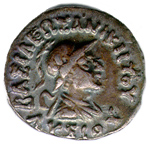
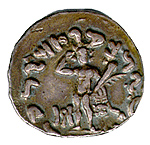
Kushan
- The earliest Kushan coinage is commonly associated with Vima Kadphises.
- Kushan coins typically featured iconographic elements derived from Greek, Mesopotamian, Zoroastrian, and Indian mythologies.
- Major Indian deities depicted on Kushan coins included Siva, Buddha, and Kartikeya.
- The Kushan gold coins had a significant influence on later coin issues, notably those of the Gupta Empire.
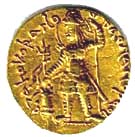 | 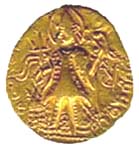 |
Satavahana
- The Satavahanas, also known as the Andhras, initially ruled the region between the rivers Godavari and Krishna before expanding their control over Western Deccan and Central India.
- The exact dates of their rise to power are debated, with estimates ranging from 270 BC to 30 BC.
- Satavahana coinage primarily consisted of copper and lead, although silver coins were also issued.
- These coins featured motifs of various fauna such as elephants, lions, bulls, and horses, often alongside natural elements like hills and trees.
- Silver coins of the Satavahanas displayed portraits and bilingual legends, influenced by the types used by the Kshatrapas.
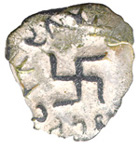 | 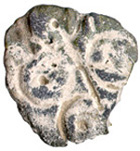 |
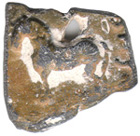 | 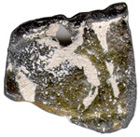 |
Western Kshatrapa
- The term Western Kshatraps refers to a group of rulers who governed Western India from the 1st to the 4th century AD.
- Coins minted by the Western Kshatraps typically featured legends in Greek, Brahmi, and occasionally Kharoshti scripts.
- These coins are considered among the earliest to bear dates, providing valuable historical insights.
- Common copper coins from this period include the ‘bull and hill’ type as well as the ‘elephant and hill’ type, depicting these animals in association with symbolic hills.
| Rudrasimha I, 180-196 AD | 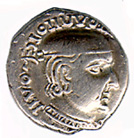 | 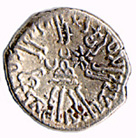 |
| Viradaman, 234-238 AD | 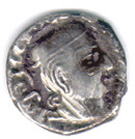 | 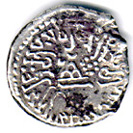 |
Gupta
- Gupta coinage, spanning from the 4th to the 6th centuries AD, continued the tradition established by the Kushans.
- On the obverse side of Gupta coins, the king was typically depicted, while the reverse featured a deity. These deities were predominantly Indian, and the inscriptions were in Brahmi script.
- The earliest Gupta coins are attributed to rulers such as Samudragupta, Chandragupta II, and Kumaragupta. These coins often commemorated significant events in dynastic succession and socio-political life.
- Gupta coins frequently celebrated events like marriage alliances and the horse sacrifice through designs such as the ‘King and Queen‘ type of coin of Chandragupta I and the ‘Asvamedha’ type.
- Additionally, Gupta coins highlighted the artistic and personal achievements of royal members, as seen in designs such as the ‘Lyrist,’ ‘Archer,’ and ‘Lion-slayer’ motifs.
| King as Horseman | 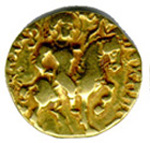 | 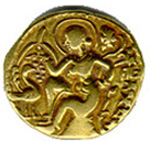 |
| King as Lion Slayer | 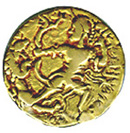 |  |
| King & Queen Type |  | 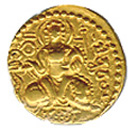 |
| Fan-Tailed Peacock | 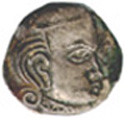 | 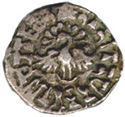 |
Post-Gupta Coinage
- Post-Gupta coinage, spanning from the 6th to the 12th centuries AD, is characterized by a rather uniform and aesthetically unremarkable series of dynastic issues.
- Notable issuers include Harsha in the 7th century AD, the Kalachuri of Tripuri in the 11th century AD, and various early medieval Rajput rulers from the 9th to the 12th centuries AD.
- Gold coins from this period are rare, although they experienced a revival under Gangeyadeva, the Kalachuri ruler. He introduced the ‘Seated Lakshmi Coins,’ which were subsequently imitated by later rulers in both gold and debased forms.
- The Bull & Horseman motif was prevalent on coins minted by the Rajput clans and emerged as the most common design.
- In western India, imported coins such as the Byzantine solidi were often utilized, reflecting the region’s trade connections with the Eastern Roman Empire.
| Seated Lakshmi | 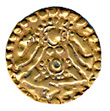 | 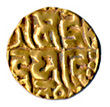 |
| Bull & Horseman | 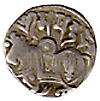 |  |
South Indian Coinage
- South Indian coin issues featured symbols and motifs representing specific dynastic crests.
- Examples include the boar for the Chalukyas, bull for the Pallavas, tiger for the Cholas, fish for the Pandyas and Alupas, bow and arrow for the Cheras, and lion for the Hoysalas.
- The Yadavas of Devagiri minted ‘Padmatankas‘ with an eight-petalled lotus on the obverse and a plain reverse.
- Coin inscriptions typically consisted of the names or titles of the issuer in local scripts and languages.
- Decorative elements were seldom found on these coins.
- Depictions of divinities were scarce until the medieval Vijayanagar period (14th – 16th centuries AD).
| Coins of the Cheras 11th – 13th Centuries | 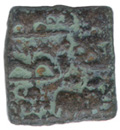 | 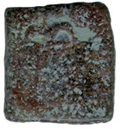 |
| Coins of the Cheras 11th – 13th Centuries | 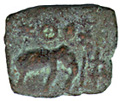 | 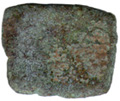 |
| Coins of the Cholas 9th – 13th Centuries | 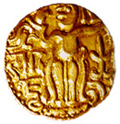 | 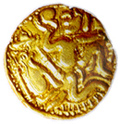 |
| Coins of the Alupas of Udipi 11th – 13th Centuries | 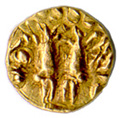 | 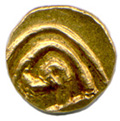 |
| Padmatankas, Coins of the Yadavas of Devagiri 12th – 14th Centuries | 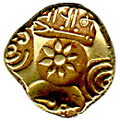 | 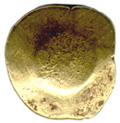 |

